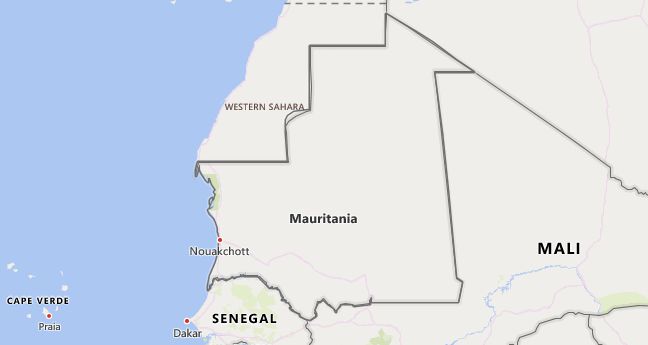There are 1 high school codes in Mauritania today, according to the ACT. The full list is shown below by city, with name of each high school and the city where the school is located (based on the ACT official site). You can search a school code by pressing “Ctrl” + “F” and then type school name or 6-digit school code.
Map of Mauritania
High School Codes by City
- High School Code
- 634010
The above lists CEEB codes (College Entrance Examination Board) for all accredited Mauritanian high schools. Please be informed that the list of high school codes in Mauritania may change throughout the year. If you can’t find codes for the high schools of your interest, please write to us or come back at a later time. We will update our database soon after a new high school code is added to the country of Mauritania.
Country Abbreviations
MRT is the three-letter country code of Mauritania, and MR is the two-letter country code of Mauritania. The two-letter suffix is used in top-level domains on the Internet as .mr.
Business
With a gross national income (GNI) of (2017) US $ 1,100 per resident, Mauritania is one of the low-income countries. The country’s economy is largely based on mining and fishing. However, remittances from migrant workers and development aid payments, especially from Arab countries, continue to have a major impact on government revenues. For years, the country’s economic policy has been based on the guidelines of the IMF and the World Bank. the fight against poverty and corruption and the continuation of the privatization course that has been initiated. The consequences are considerable social tensions. A large part of the working population is unemployed or underemployed.
Foreign trade: Due to the falling world market prices for many raw materials, the foreign trade balance is negative (export value 2016: 1.62 billion US $, import value: 2.17 billion US $). Iron ore, gold, fish and fishery products and livestock products are the main export goods; The main imports are machines and equipment, petroleum products and food. The most important trading partners are China, Spain, Switzerland, the USA, the Netherlands and the United Arab Emirates.
Agriculture
76.1% of the workforce work in agriculture, which is primarily used for self-sufficiency; they generate 27.4% of the gross domestic product (GDP). Most of the arable farming is carried out in the valley of the Senegal River. The most important crop is rice; other agricultural products are millet, corn, potatoes, potatoes, legumes and peanuts. Dates are grown in the oases. Much of the grain demand can only be met by imports. In total, only 0.4% of the state’s area is arable land and permanent crops; around 38% are used as pastureland. Cattle breeding is mainly carried out by nomads; Cattle, camels, sheep and goats are bred. The yields from agriculture fluctuate and are heavily dependent on climatic conditions. Mauritania suffers from regular droughts as well as from floods and locust plagues. In addition, large parts of the Mauritanian Sahel are affected by desertification.
Forestry: Due to excessive use, the already small amount of forest in Mauritania was further reduced. In 1990 0.4% of the country’s area was covered by forests, in 2015 the area halved to just 0.2%. Almost all of the logging is used as firewood or is made into charcoal.
Fisheries: The waters off Mauritania are among the most productive fishing grounds in Africa. After Mauritania expanded its territorial waters to 200 nautical miles off the coast and granted fishing rights to several states, there are clear signs of overfishing. Nevertheless, fishing still contributes around 35.9% to export earnings.
Natural resources
Along with the Republic of South Africa, Mauritania is one of the largest iron ore producers in Africa (extraction volume in 2016: 13.3 million t) and one of the most important suppliers for Western Europe. The iron ore reserves are estimated at 700 million t. Iron ore has been mined in the Zouérate area since 1963, in the Guelb region 40 km northeast of Zouérate since 1984 and in M’Haoudat and Dikheila since 1992, mainly by the largest state-owned mining company, SNIM (Société Nationale Industrielle et Minière). In addition, copper ore is mined in Akjoujt; in addition there is the gold and cobalt yield. Gypsum is mined north of Nouakchott. Diamond mining has been taking place not far from Tenoumer and Touajil since 1999. Oil and gas are also extracted, mostly offshore, with most of the oil products remaining on the domestic market. Other mineral resources (e.g. Phosphate, chromium, titanium, tungsten, uranium) are not yet used commercially. Mining generates (2016) around 12% of GDP and 42.3% of export earnings, including oil production.
Industry
The manufacturing and construction industries generate around 17.8% of GDP. The economic centers are Nouakchott and Nouadhibou. The manufacturing industry is mainly limited to the processing of agricultural products, to drying, salting and freezing of fish as well as to the production of fish meal and canned tuna. There is an oil refinery in Nouadhibou. Cement production is also important.

